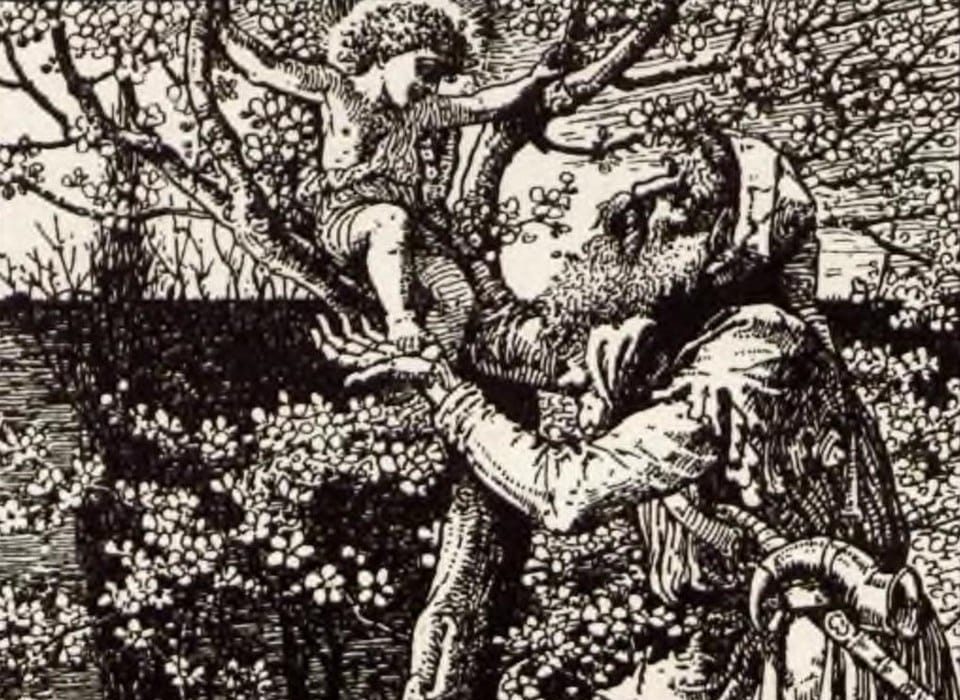When you read a Scary Stories to Tell in the Dark book, you no doubt expect grim depictions of horror and eerie drawings that could only come from beyond. Yet, you should expect the images to perfectly visualize the stories between the covers. Just like the three-book collection of Scary Stories. In this post, we delve into the abyss of terror once more. After previously dissecting Scary Stories to Tell in the Dark and More Scary Stories to Tell in the Dark, we now turn our gaze to the sinister Scary Stories 3: More Tales to Chill Your Bones. Join us as we analyze and summarize this literary descent into darkness.
Writing Style
Alvin Schwartz has the quintessential folkloric style: conversational. Folklore is an oral tradition, and one that benefits people who can tell a story in conversation. There are so many moments in books and television, where one of the characters begins to rattle off a monologue that is in fact a story of events in the past. Typically these moments are done well by those who have a conversational tone.
Meanwhile, in the story “Faster and Faster,” Schwartz starts off with a fairy tale-like tone and mood: “Sam and his cousin Bob went walking in the woods. The only sounds were leaves rustling and, now and again, a bird chirping. ‘It’s so quiet here,’ Bob whispered.” In this way, Schwartz pulls us into the story with a pretty conventional beginning but one that sounds as if he could be plopped down next us by a fire.
Eventually, the boys find a drum, and Schwartz writes: “But Bob could not resist trying the drum. Instead, he sat on the ground and held it between his legs. He beat on it with one hand, then the other, slowly at first, then faster and faster, almost as if he could not stop.”
Overall, there is nothing confusing in this language. It is straightforward and to the point. It tells us everything we need to know and it uses very deliberate description to help us understand what is happening. The entire book is filled with this type of writing and it is really beneficial to the reader.
Art Style
The visual imagery of horror is often the one that stays with us long after the story has faded. I think of all the paperback and hardcover copies I’ve seen that perfectly encapsulate a book’s contents. Many of them fail to convey the book’s contents, but some of them go above and beyond.
For instance, the 1983 edition of Pet Sematary from Doubleday has it all on the surface—a yowling cat, a silhouetted figure to symbolize sin and the grim choices we make, and the red sky for blood and murder. Equally, Richard Matheson’s I Am Legend‘s cover is perfection, as it has a man performing some action (presumably throwing a light) to ignite a burn-pit filled with plague vampires. The colors of green and black perfectly balance the emerald-sky fever alive in the illustrator’s head.
As mentioned before, Gammell’s illustrations are horrific. The cover itself has three mutated faces like something from The Labyrinth (1986) after a dose of radiation. An updated cover has what appears to be a witch on the cover who is holding a staff and a cane…and she looks distressed. Similarly, in “Sam’s New Pet,” we have more of that mutated, monster imagery that Gammell is so fond of drawing. A truly wretched rat-like creature appears to be taking baby steps forward. Neverthless, one of my favorites, “Harold,” depicts a tubby scarecrow with a forsaken face hanging from a wooden spike. His black eyes stare dead ahead in a field of Gothic horror. Two silhouette’s stand on the horizon looking on with trepidation from behind a rotted fence.
There is levity in the stories, but It does not appear that Gammell has time for that. There is no levity in his artwork. It is all horrifying, from spiders crawling out of a woman’s face, to a mangled plant creature with sparse human teeth approaching the frame. It’s all scary, and it’s all wonderful.
What’s inside
There are a variety of stories inside Scary Stories 3: More Tales to Chill Your Bones, and each set of stories is divided into parts to create a comprehensive organization.
Stories and sections include:
| When Death Arrives | On the Edge | Running Wild |
| The Appointment The Bus Stop Faster and Faster Just Delicious Hello, Kate! The Black Dog Footsteps Like Cats’ Eyes | Bess Harold The Dead Hand Such Things Happen | The Wolf Girl |
| Five Nightmares | What is going on here? | Whoooooooo? |
| The Dream Sam’s New Pet Maybe You Will Remember The Red Spot No, Thanks | The Trouble | Strangers The hog Is Something Wrong? It’s Him! T-H-U-P-P-P-P-P-P-P! You May Be The Next… |
Notable Stories
I remember this book for one very specific reason: “Harold.” This story terrified me as a kid and even rereading it makes me wonder how it made it past a censor (but I guess that was probably the least of Alvin Schwartz’s concerns). As if right now, I have a small Harold doll that sits on my bookshelf because one simply can’t erase that kind of trauma, so I might as well embrace it forever.
Back to the book, it features a ton of great stories that will nestle deep in your psyche. “The Appointment” has all the trappings of folklore and the picture with it is exceptionally interesting (a truck flying through the sky as the Grim Reaper points up toward it with one bony finger). Likewise, “The Black Dog” is a chilling ghost story about the specter of an animal that haunts an old house. Finally, “Sam’s New Pet” tells the tale of a couple of kindly parents that bring their child back a pet…but it’s not exactly what it seems.
Conclusion
Scary Stories 3: More Tales to Chill Your Bones has an excellent cross section of stories from your run-of-the-mill folklore to one of the most heinous and explosively horrifying stories I’ve ever read. It is a fantastic collection of stories that stands up against the rest of the stories in the series. It is a masterpiece of sinister delights!
If you are interested in purchasing this book, I would certainly invest in the anthology collection that has all three books wrapped in a thick binding. All three books are a must-have for any book lover.
Works Cited
Schwartz, Alvin. Scary Stories 3: More Tales to Chill Your Bones. Harper Collins. 1991.





Leave a comment